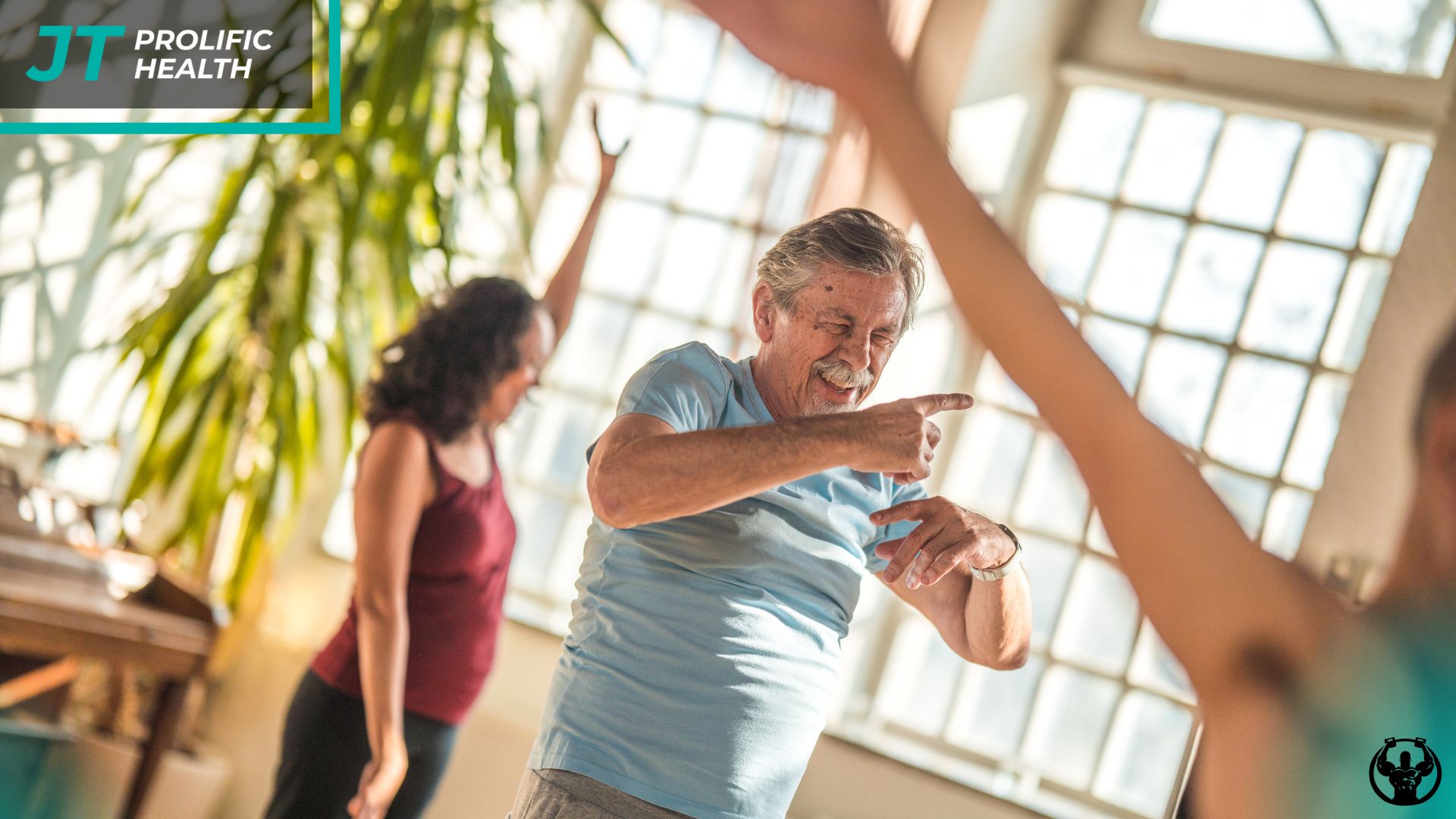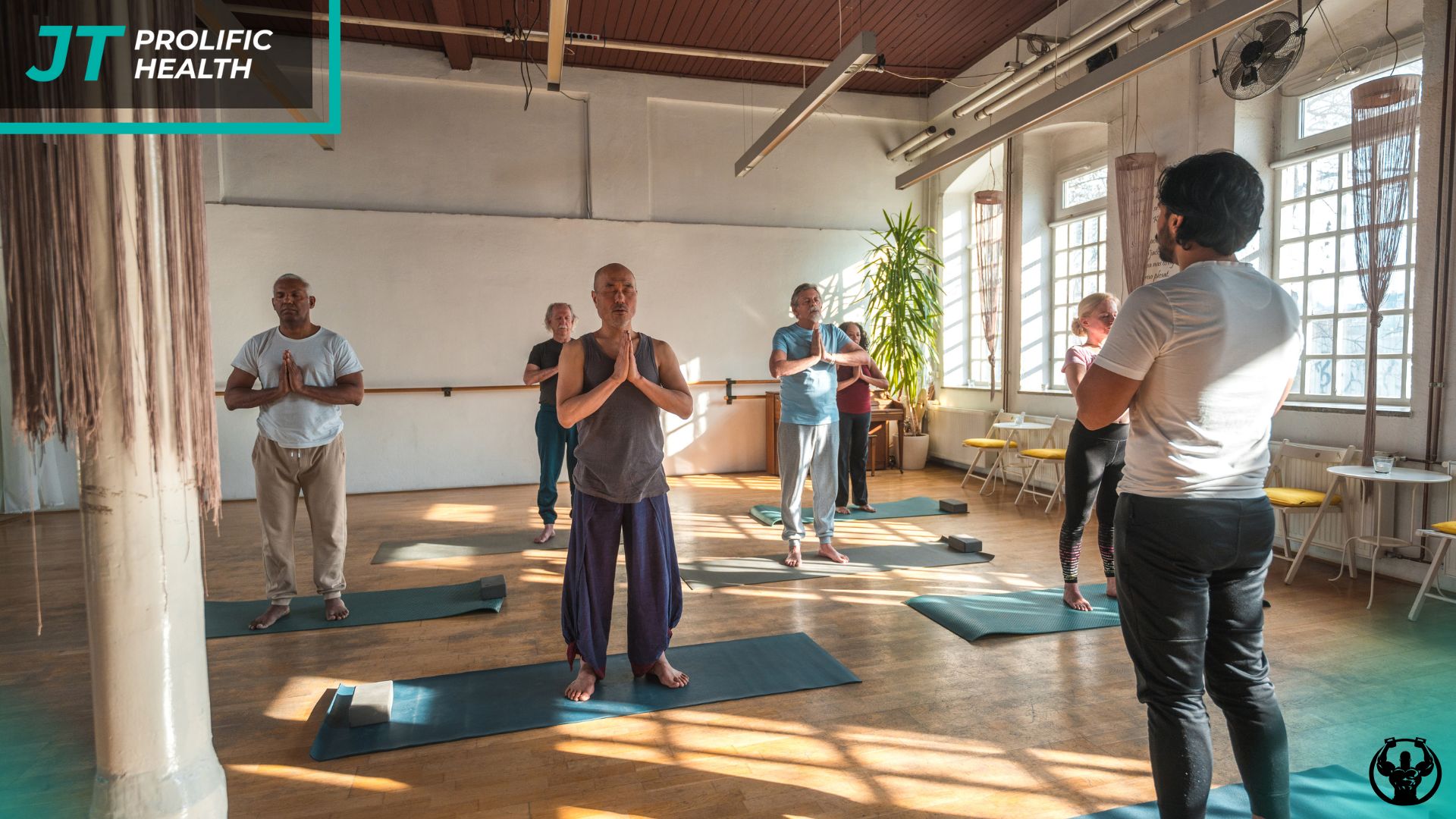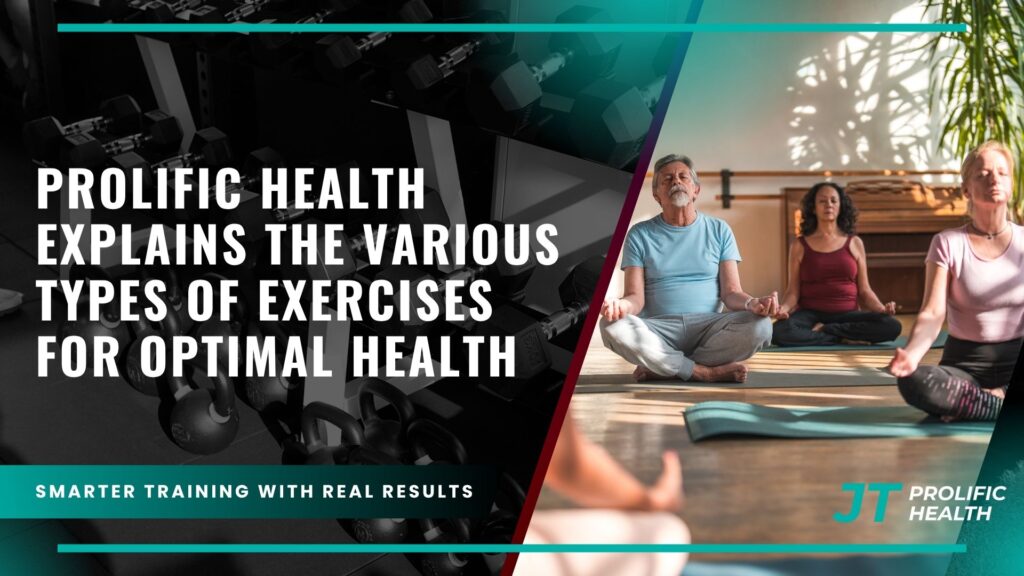Did you know only 20% of adults meet minimum physical activity guidelines? This startling statistic from the Physical Activity Guidelines for Americans highlights a global health challenge. In Richmond and Vancouver, where active lifestyles are celebrated, many still struggle to maintain consistent movement habits.
At Prolific Health, we simplify fitness for our local community. Our guide cuts through the noise to show how strategic movement patterns boost cardiovascular function, muscle development, and mental wellness. You’ll discover practical methods to build sustainable routines tailored to your unique needs.
Physical activity isn’t just about gym memberships or marathon training. It’s about finding balanced approaches that fit into real life. We break down science-backed strategies that address common barriers like time constraints and motivation fluctuations.
Key Takeaways
- Four out of five adults lack sufficient physical activity for good health
- Balanced movement patterns enhance multiple health aspects simultaneously
- Personalized routines increase long-term adherence to active lifestyles
- Exercise benefits extend beyond physical health to mental wellness
- Practical solutions exist for common fitness barriers
This resource empowers you to make informed choices about movement. Whether you’re starting fresh or refining existing habits, our evidence-based approach helps you optimize your wellbeing efficiently.
Introduction
Your journey to better health begins with understanding movement’s transformative power. Research confirms regular physical activity sharpens mental focus, stabilizes moods, and simplifies daily tasks. Whether carrying groceries or chasing kids, fitness impacts how you experience life’s moments.


Many people feel overwhelmed when starting exercise programs. Sedentary lifestyles create hidden hurdles—stiff joints from desk work, low energy after screen time. We’ve helped Richmond and Vancouver residents turn these challenges into victories through smart fitness strategies, including private training for tailored results.
Exercise isn’t about punishment or perfection. It’s about building resilience in your heart, muscles, and mind. Our approach combines science with real-life practicality. You’ll learn how different movements boost energy levels while protecting against chronic conditions.
Prolific Health’s local expertise comes from years of observing what works in Canadian lifestyles. We guide you past temporary fixes to create sustainable routines. The right balance of activities becomes second nature, like brushing your teeth or preparing meals.
This foundation prepares you to explore specific methods in later sections. You’ll discover how varied movement patterns work together to optimize wellbeing. Let’s reshape your relationship with fitness – one intentional step at a time.
Canadian Physical Activity Guidelines from Local Government
Canada’s official activity benchmarks turn fitness goals into achievable plans. Health Canada’s research-backed targets help you build sustainable habits that match your life stage. These guidelines balance modern lifestyles with biological needs for movement.


Adult Recommendations and Tips
Aim for 150 weekly minutes of moderate-intensity movement like brisk walking. Alternatively, 75 minutes of vigorous activity like running delivers equal benefits. Break sessions into 10-minute chunks if needed – every bit counts.
Add muscle-strengthening activities twice weekly. Try bodyweight exercises or group strength sessions during TV commercials. Gradually reduce sitting time by standing every 30 minutes.
Youth Physical Activity Guidelines
Children need 60 daily minutes of heart-pumping movement. Three days should include vigorous play like soccer or cycling. Encourage activities that strengthen bones and muscles through jumping or climbing.
Active kids develop better focus and coordination. Family hikes or dance challenges make fitness fun. These habits set the stage for lifelong health in Canadian winters and beyond.
Health Benefits of Regular Exercise
Movement does more than shape your physique—it rewires your body’s internal systems for lasting vitality. Science confirms active living reduces your risk of heart disease by 35% and lowers chances of developing chronic conditions like type 2 diabetes. These protective effects work through multiple biological pathways, creating layered health advantages.


Your Heart’s Best Ally
Consistent activity strengthens your heart like any other muscle. A robust cardiovascular system pumps blood more efficiently, lowering blood pressure naturally. Improved circulation delivers oxygen-rich blood to organs and muscles, enhancing overall function.
Exercise balances cholesterol levels by increasing HDL (good cholesterol) while reducing LDL (bad cholesterol). This dual action keeps arteries flexible, reducing plaque buildup. Over time, these changes significantly decrease stroke risk and improve vascular health.
Mind-Body Synergy
Physical activity triggers endorphin release—your body’s natural mood boosters. Studies show 30 minutes of daily movement can ease anxiety as effectively as some medications. Regular exercisers report better stress management and emotional resilience.
Brain benefits include sharper memory and faster decision-making. Movement stimulates new neural connections, protecting against age-related cognitive decline. Better sleep patterns emerge as exercise regulates cortisol levels and resets circadian rhythms.
These interconnected benefits create self-reinforcing cycles. As your heart health improves, energy levels rise—making mental clarity and motivation easier to sustain. Start small: even brief activity bursts yield measurable advantages for Canadian winters and beyond.
Deep Dive into types of exercises
Your fitness journey thrives when you understand how different movements fuel your body. Two distinct energy systems power physical efforts – one requiring oxygen, the other relying on stored reserves. Mastering this distinction helps you design routines that challenge your body effectively.
Oxygen-Powered Conditioning
Aerobic movements keep your heart rate elevated for extended periods. These rhythm-based activities train your lungs and circulatory system to deliver oxygen efficiently. Brisk walks or swimming sessions lasting 20+ minutes fall into this category.
Short-Burst Power Development
Anaerobic efforts demand maximum muscle output in quick bursts. These intense challenges tap into energy reserves without oxygen dependence. Think sprints or heavy lifting lasting under two minutes.
Combining both approaches creates complete physical preparedness. Steady-state activities build endurance for daily tasks, while explosive movements enhance reaction times. Try alternating cycling sessions with hybrid training for balanced results.
Popular Canadian-friendly options include:
- Cross-country skiing (aerobic)
- Ice hockey drills (anaerobic)
- Hiking mountain trails (mixed)
This knowledge lets you match activities to specific fitness goals. Whether training for a charity run or carrying firewood, understanding energy systems helps you progress safely.
Aerobic Exercises for Cardiovascular Fitness
Boosting your heart health starts with activities that make you breathe deeper and move continuously. These rhythm-based movements strengthen your circulatory system while fitting seamlessly into Canadian urban and natural landscapes.
Step Smart: Brisk Walking Basics
Transform ordinary errands into fitness opportunities. Walk at 4 km/h (2.5 mph) along Richmond’s Steveston Village boardwalk or Vancouver’s Stanley Park Seawall. Carry reusable bags during grocery trips for light resistance.
- Track pace using free smartphone apps
- Use pedestrian-friendly bridges like Cambie Street
- Join local walking groups at community centres
Cycle Through Scenic Routes
Pedal through Richmond’s Terra Nova Rural Park or Vancouver’s Arbutus Greenway. Stationary bikes work for rainy days – try recumbent models at city recreation facilities. Maintain 16 km/h (10 mph) for moderate intensity.
Jogging Journeys Made Simple
Start with walk-jog intervals on flat trails like Richmond’s West Dyke. Gradually increase running segments as endurance improves. Proper footwear from Canadian retailers prevents joint strain.
Consistent aerobic sessions help your body burn calories efficiently while lowering resting heart rate. Pair these activities with hydration and rest days for sustainable fitness gains. Local recreation departments offer free route maps to keep your routines fresh and engaging.
Resistance and Strength Training for Muscle Building
Building physical resilience requires more than movement—it demands strategic resistance. Strength training shapes your body’s capacity to handle life’s demands, from lifting groceries to climbing Grouse Mountain trails. These workouts strengthen bones, rev metabolism, and improve how you move daily.
Smart Progression Prevents Injury
Start with bodyweight mastery before adding resistance. Perfect your squat form before grabbing dumbbells. Control matters more than heavy weights—slow, precise movements activate muscles effectively.
Increase challenges gradually through added weight, reps, or frequency. This progressive overload principle sparks continuous improvement. Allow 48 hours between sessions targeting the same muscle groups for recovery.
Key safety practices for Canadian fitness enthusiasts:
- Warm up with dynamic stretches for 5-10 minutes
- Exhale during exertion phases of lifts
- Keep joints slightly bent, never locked
- Use spotters for heavy barbell work
Structure workouts to hit all major muscle groups twice weekly. Alternate upper and lower body days for balanced development. Local recreation centres offer guided online coaching options to refine your technique safely.
Balance and Flexibility for Stability and Mobility
What keeps you steady during icy winters or steep trails? While cardio and strength work dominate fitness conversations, balance and flexibility form your body’s silent support system. These elements maintain your ability to move confidently through daily life – from navigating crowded sidewalks to reaching top pantry shelves.
Movement Arts Meet Modern Needs
Tai chi shines for Richmond and Vancouver residents seeking low-impact balance training. This flowing practice improves stability through controlled weight shifts, ideal for older adults or desk workers. Local parks like Minoru Park host morning sessions where gentle motions sync with breathwork.
Yoga adapts to all fitness levels while addressing flexibility and core strength. Modified poses build joint mobility without strain – perfect after hours spent driving or typing. Studios across Metro Vancouver offer heated classes to loosen tight muscles and chair yoga for accessibility.
Foundational Strength Matters
Core exercises do more than sculpt abs. They create a stable base for every movement, whether shoveling snow or lifting grandchildren. Try planks or bird-dog poses while watching hockey games. Strong core muscles reduce back pain and improve posture during Canada Day parades or Granville Island strolls.
Three local-friendly ways to start:
- Join free tai chi groups at Richmond Cultural Centre
- Use yoga straps from Canadian retailers for deeper stretches
- Practice balance drills while brushing teeth
These practices help you move smoothly through life’s physical demands. From yoga in Kitsilano to core workshops in Steveston, our communities offer endless options to stay nimble year-round.
Incorporating Exercise into a Busy Lifestyle
Busy calendars don’t have to derail fitness goals. Small shifts in daily habits create lasting change for Richmond commuters and Vancouver parents alike. Think of movement as currency – every step deposits health benefits into your wellbeing account.
Seamless Activity Integration
Transform your commute by parking at YVR’s long-term lot and walking to the terminal. Take conference calls while pacing your office or backyard. Swap elevator rides for stair climbs in downtown Vancouver towers – start with two flights and build endurance.
Household chores double as functional training. Scrub floors vigorously or carry laundry baskets upstairs. During TV time, alternate couch stretches with commercial-break squats. These micro-sessions add up without disrupting routines.
Try “activity stacking” by pairing tasks with movement. Walk to Steveston’s London Landing for coffee instead of driving. Cycle to Richmond Centre for quick errands using the Railway Greenway. Families can turn playground visits into obstacle courses while supervising kids.
Consistency trumps intensity. Ten-minute walks after meals or calf raises while brushing teeth maintain momentum. Local recreation centers offer lunchtime yoga for professionals. Remember—every movement counts toward your health goals, even on packed days. If you’re ready to get started, contact us today.




